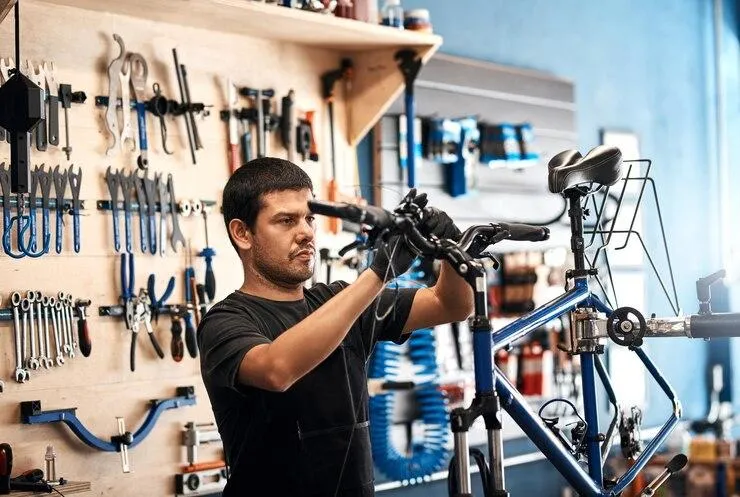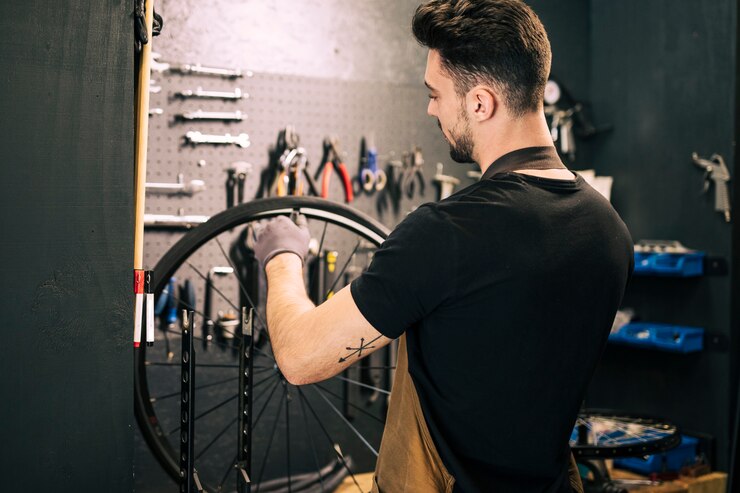
How Regular Bicycle Maintenance Extends Bike Life
Keeping your bike in top condition doesn't have to be complicated, but it does require consistency. Just like any well-used machine, a bicycle endures wear and tear from frequent rides, exposure to the elements, and varying terrain. Without proper attention, these factors can quickly lead to premature damage or breakdowns. Regular bicycle maintenance plays a crucial role in preventing costly repairs and ensuring every ride remains smooth and safe. From checking tire pressure to cleaning your chain, small routine tasks can significantly increase your bike’s longevity and performance, keeping it road-ready for years to come.
Routine Cleaning Prevents Wear and Tear
Dirt, grime, and debris naturally build up on your bike over time, especially if you ride frequently or in varying weather conditions. This buildup can cause friction in moving parts and lead to unnecessary wear. By committing to regular cleaning as part of your bicycle maintenance routine, you help reduce the risk of corrosion and extend the life of key components like the drivetrain, brakes, and derailleurs. Wiping down your frame, scrubbing your chain, and removing mud from your wheels all contribute to keeping your bike running efficiently.
Clean components are also easier to inspect for damage, allowing you to spot issues before they become serious. A clean bike not only rides better but also encourages you to treat it with greater care. With each cleaning session, you reinforce your connection to your bicycle and ensure that it performs at its best. Over time, these small maintenance habits contribute greatly to overall bike longevity and smooth, dependable rides.

Chain Lubrication Maintains Performance
The chain is one of the most active components of your bicycle and endures constant motion and tension. Without lubrication, it can wear out prematurely, cause poor gear shifting, and even damage other drivetrain parts. Regularly lubricating your chain is an essential part of bicycle maintenance that ensures smoother rides and better energy transfer. It reduces friction, minimizes rust, and prevents unnecessary grinding between the metal surfaces that work together to move your bike.
Applying lubricant correctly involves cleaning the chain first to remove old grease, dirt, and debris. Once clean, a fresh layer of lube should be applied evenly while turning the pedals. Afterward, wipe off excess lubricant to avoid attracting more dirt. This simple maintenance step takes just a few minutes but offers lasting benefits. It helps preserve the life of not only the chain but also the cassette and chainrings. Over time, consistent lubrication can save you money by reducing the frequency of part replacements.
Brake System Checks Ensure Safety
Brakes are essential for control and safety, especially when navigating traffic, descending hills, or reacting to sudden obstacles. Maintaining them is a crucial aspect of bicycle maintenance that directly affects how well your bike performs under pressure. Worn-out brake pads, misaligned calipers, or stretched cables can all lead to ineffective braking and dangerous riding conditions. By checking your brake system regularly, you ensure consistent stopping power and increased peace of mind on every ride.
Inspections should include looking at pad thickness, checking cable tension, and testing lever responsiveness. If you notice squeaking, delayed stops, or a spongy feel at the levers, your brakes may need immediate attention. Replacing pads before they wear too thin and tightening cables as needed can make a significant difference. For bikes with hydraulic disc brakes, checking for fluid leaks or spongy response is key. Staying on top of brake maintenance enhances your bike’s lifespan and gives you confidence in its performance no matter where you ride.
Tire Care Reduces Replacement Frequency
Tires are your direct connection to the road, and their condition affects comfort, speed, and safety. Worn or underinflated tires can lead to frequent flats, poor grip, and a rougher ride. Regular tire inspections and maintenance help preserve their condition, which can reduce how often you need to replace them. Maintaining correct air pressure, inspecting for punctures or embedded debris, and checking tread wear are essential parts of bicycle maintenance.
Keeping tires properly inflated ensures better control and reduces rolling resistance. Overinflated tires may feel harsh and lead to uneven wear, while underinflated ones increase the risk of pinch flats. Looking at sidewalls for cracks and removing small stones from the tread can also extend their usability. By staying attentive to your tires, you’ll enjoy a smoother ride and spend less on frequent replacements. Over time, this attention adds up to improved bike performance and a longer lifespan for your wheels and frame as well.
Gear System Maintenance Enhances Shifting
A well-maintained gear system allows for smooth, reliable shifting and efficient power transfer. When neglected, grime and misalignment can cause delays in shifting, skipped gears, or chain slips—all of which hinder performance and wear down components. Incorporating gear care into your bicycle maintenance plan helps reduce strain on your drivetrain and keeps every ride enjoyable and responsive. Cleaning and adjusting the derailleur system regularly prevents small problems from turning into costly repairs.
Begin by cleaning the derailleur and gear cassette to remove built-up debris. Check for any signs of misalignment or frayed cables. If your gears hesitate or make grinding sounds, adjustments may be needed to realign the derailleur or tighten cables. Lubrication of the derailleur pivot points also promotes smooth movement. Staying on top of these tasks allows your gears to shift cleanly under all conditions. Over time, proper gear care leads to a longer-lasting bike and a more seamless cycling experience across any terrain.
Frame Inspection Detects Early Damage
The bike frame serves as the core structure, supporting both rider and components. Cracks, dents, or corrosion can compromise the integrity of the frame and make your ride unsafe. Regular frame inspection is a valuable part of bicycle maintenance that allows you to detect issues early and avoid costly repairs or replacements. Whether your bike is made of steel, aluminum, carbon fiber, or titanium, a close visual check after each cleaning can reveal early signs of wear.
Focus on weld points, joints, and high-stress areas where cracks may develop. For carbon frames, look for soft spots or unusual flexing. Addressing minor problems right away can prevent a sudden failure while riding. Frame maintenance also includes ensuring all bolts are tight and free of rust. With regular checks, you preserve the structure that holds everything together. Over time, this care keeps your bike safer and stronger, giving you the confidence to ride in any condition with full trust in its build.
Bearing Systems Keep the Ride Smooth
Bearings are found in your bike’s hubs, bottom bracket, headset, and pedals—key areas where smooth rotation is necessary for a fluid ride. When neglected, these components can seize, creak, or develop resistance, making your bike harder to pedal and steer. Regular attention to these parts as part of your bicycle maintenance keeps your ride smooth and helps extend the overall lifespan of the bike. Clean, lubricated bearings reduce friction and preserve energy efficiency with each pedal stroke.
Checking for play or unusual movement in your wheels or crank arms can signal bearing wear. Periodically disassembling and greasing these systems helps maintain their performance. If bearings feel gritty or make noise, it may be time to replace them. While some modern bikes use sealed cartridge bearings that are harder to service, others can be cleaned and repacked with grease. Staying proactive about bearing health contributes to longer-lasting components and a consistently comfortable riding experience across all distances.
Cable and Housing Care Boosts Responsiveness
Cables and housings control both your shifting and braking functions, and they experience constant tension and environmental exposure. Over time, dirt, moisture, and friction can lead to stretched cables or corroded housing, which in turn reduces your bike’s responsiveness. Including cable care in your bicycle maintenance schedule helps maintain the crisp feel of gear changes and the quick reaction of your brakes. Smooth operation here can dramatically impact your ride quality and safety.
Regular checks should involve inspecting for fraying cables, rust, or kinks in the housing. Applying a light lubricant inside the housing can reduce resistance and prolong cable life. If cables feel sluggish or sticky, replacing them may be the best option. Properly installed and maintained cables improve your overall bike control and extend the life of connected components. Keeping this system in top shape ensures your bike remains reactive and predictable in all conditions, making every ride more controlled and enjoyable.

Saddle and Handlebar Adjustments Preserve Comfort
Comfort plays a major role in how often and how long you ride, and poorly adjusted components can lead to pain or fatigue. Over time, vibrations and impacts can shift your saddle or handlebars slightly, affecting posture and control. Regular checks and adjustments to these contact points are a smart part of bicycle maintenance that supports long-term bike use. A properly fitted setup also helps distribute pressure evenly and reduces strain on your joints.
Check the saddle height and tilt, ensuring it aligns with your body’s natural posture. Handlebar angles and grip positioning should feel stable and ergonomic. Making small adjustments over time as your riding style changes can help prevent discomfort and long-term injury. Tightening bolts and checking for worn-out grips or seat padding also contributes to a better experience. Maintaining these areas not only protects your body but also encourages consistent use, which in turn contributes to a longer bike lifespan and better rides.
Conclusion
Taking care of your bike on a regular basis ensures it stays reliable, safe, and enjoyable to ride for years to come. With simple yet consistent practices, you can avoid unnecessary repairs, preserve performance, and get the most out of every ride. From tires to chains and brakes, every part benefits from the attention and care that bicycle maintenance provides.
If you’re in Laguna Hills, CA, and want expert help keeping your bike in peak condition, reach out to the team at OC Bike Garage. Our professional service ensures your ride stays smooth and ready for any trail or road. Call us today at (949) 919-7140 to schedule a maintenance check or ask about our services. Let your bike go the distance with expert care.